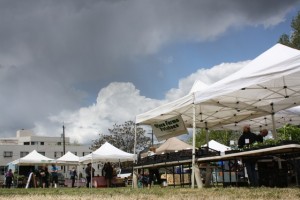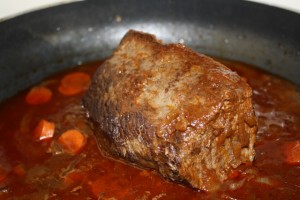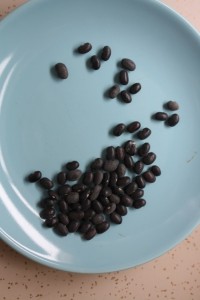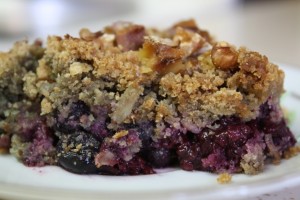Patience Noun. Synonyms: endurance; lack of complaint; persistence; fortitude; serenity.
1 the capacity to accept or tolerate delay, trouble, or suffering without getting angry or upset
ORIGIN Middle English : from Old French, from Latin patientia, from patient- ‘suffering,’ from the verb pati.

Wisdom teachers come in many forms.
My friend Kathy gave me a small stoneware teapot a few months ago. It’s a pot she had stored in her kitchen for some time, although I don’t remember seeing it before. A former pack rat, she has been working for several years now to slowly, slowly divest herself of items that she no longer needs—and the teapot was one of those items.
As a semi-recovering pack rat myself, I’m happy to assist her quest. And I can justify bringing another object into my home because (A) I drink tea every morning; (B) this pot is smaller than the one I’d been using; and (C) it’s really a lovely teapot, and it brings a spot of beauty to my morning routine. To fully justify, I guess I’d have to get rid of the larger teapot that I’d been using, but I’m not doing that because it’s a good size for those occasions when I’m serving two or three people at a time. Instead, I’ll just watch for an opportunity to pay the favor forward by releasing some little-used possession of mine to a friend who really needs it.
My new little teapot has a short, narrow spout and a high bamboo handle. I discovered early on that tipping the teapot too far forward in order to fill my cup quickly—as was my previous habit—results only in the spillage of hot tea all over the counter. I cannot rush; I have to pour at just the right pace. And when I do, the pale amber arc formed by the liquid is one more beautiful sight in my day.
At the start of each day, then, my teapot reminds me to be patient and mindful. I can’t just splash the tea in the cup while thinking or doing something else; I have to focus on pouring the tea. And when I do, I am rewarded with beauty. Not to mention a cup of lovely hot tea.
This has been a larger lesson for me to ponder in the weeks (months?) since my last post. I was beginning to run out of enthusiasm for writing posts here. I felt that I had hammered on the healthy-and-sustainable-food-on-a-budget theme enough that I was beginning to repeat myself.
Actually, this process has made me think about the purpose of blogs in the brave new world of full-throttle, real-time identity construction. For me, anyway, a blog is about a search—the search to find an answer, the search to find something meaningful, the search for a theme, the search for connection, for linkage. Once the answer has been found and the connections made (“My purpose is to eat healthy foods that are sustainable for the planet and my community and myself, and then to write about it”), then the reason for the blog ceases to exist. Maybe I’m getting too metaphysical here, but I think a blog serves to document the journey and the process—not the destination or the final result. Perhaps that’s true of all narrative writing: The narrative has to take the reader somewhere; it can’t be a static description, no matter how glorious the descriptors.
And so, I am shifting focus slightly in order to write from the process rather than the goal. Over the last two years, since my departure from full-time employment, I have been on a spiritual journey, a journey of self-discovery—or, perhaps, self-RE-discovery. I am following Walt Whitman’s dictate: “Re-examine all you have been told… Dismiss what insults your soul.” Much of what I have been told, many of the rules I have followed, and the behavioral codes I have adhered to, are ripe for questioning.
Global issues clatter about in my head. Our world—the geopolitical realities, the economics and the climate we’ve grown up with—is changing and shifting under our feet and over our heads. I have no control over the actions of others, although I can speak my truth. The only response I can control, in the face of all this change, is my own.
And I’m still sorting out those responses. I strive for consistency, but I make no promises. It’s all still a work in progress. But I’m trying to glean wisdom wherever I find it. And one of those wisdom pieces that appears in many of the world’s spiritual paths is mindfulness.
So, in response to a world filled with distractions, a world that praises multi-tasking as its most valuable skill, my new discipline is single-tasking. When I am writing here, I am writing here—I’m not checking email, or reading the latest issue of The New Yorker on the side, or researching recipes online (although I did just stop and feed the cats so they would stop distracting me). When I eat at home (which is most of the time), I set a place at the table, and I eat my meal. I don’t read or work or watch television, nor do I eat standing up at the counter; I eat, and I savor. Sometimes I listen to the radio as I eat, but often I eat in silence, listening to the sounds of the house and the neighborhood. When I go for a walk alone, I do not carry my iPod, nor do I talk on the phone (or text or check messages). I simply walk.
Part of this is a practical response to my own limitations: I’m just not good at rapidly juggling multiple competing demands for my time and attention. Part is common courtesy: When I’m conversing, I believe it’s only polite to keep my focus on my companion, and vice versa. But mostly it’s about living fully the moments of my life. I want to taste those meals. I want to feel the breeze and hear the sounds of my local world. I want to listen and remember what the person across the table is saying to me. I want to appreciate the sunset in a hazy September sky.
And I want to watch the tea as it flows beautifully from the teapot to my cup. I want to admire the design and the craftsmanship that went into creating the teapot. I want to smell the toasty earthiness of my favorite gen mai cha tea. I want to slow down and not hurry past the moment.
I want to sip my tea, not gulp it.
I want patience in an impatient world.













